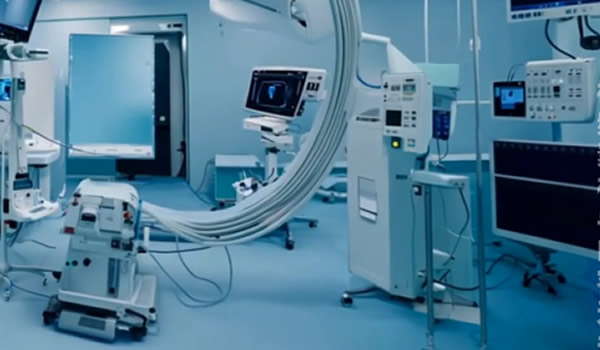Coronary artery disease (CAD), also known as ischemic heart disease, is the leading cause of death worldwide and a rapidly growing health crisis in Asia. It occurs when plaque builds up inside the coronary arteries, narrowing them and reducing blood flow to the heart. This guide explores the risk factors, symptoms, treatment options, and prevention strategies for CAD, with a special focus on the Asian population.

What is Coronary Artery Disease?
Coronary artery disease develops when cholesterol, fat, and calcium deposits (plaques) accumulate inside the arteries that supply the heart. Over time, these plaques harden, narrow the arteries, and restrict blood flow. In severe cases, plaques rupture, leading to blood clots that can cause heart attacks.
The Growing Burden of CAD in Asia
- High Mortality Rates: CAD is the top cause of death in China, India, and Southeast Asia.
- Younger Patients: Asians often develop CAD at younger ages compared to Western populations.
- Urban Lifestyle: High-fat diets, sedentary routines, and rising obesity rates increase risks.
- Genetic Predisposition: South Asians are genetically more prone to metabolic syndrome and diabetes, which worsen CAD outcomes.
The World Health Organization reports that more than half of global CAD deaths occur in Asia.
Symptoms of CAD
CAD is often silent until advanced stages. Warning signs include:
- Chest pain or discomfort (angina).
- Shortness of breath.
- Fatigue during physical activity.
- Dizziness or fainting.
- Heart palpitations.
⚠️ Women may present with atypical symptoms such as nausea, jaw pain, or indigestion, making diagnosis challenging.
Major Risk Factors in Asia
- Diabetes: Highly prevalent in Asia, accelerating plaque buildup.
- High Blood Pressure: Affects one in three adults in the region.
- High Cholesterol: Linked to unhealthy diets.
- Smoking: Common in countries like China, Indonesia, and the Philippines.
- Obesity and Sedentary Lifestyle: Increasing due to urbanization.
- Stress and Work Pressure: Particularly significant in East Asia.

Diagnosis of CAD
Doctors may use the following tests:
- Electrocardiogram (ECG): Detects abnormal heart rhythms.
- Echocardiogram: Assesses heart function.
- Stress Test: Monitors heart under exercise.
- CT Coronary Angiography: Visualizes artery blockages.
- Cardiac Catheterization: Direct examination of coronary arteries.
Treatment of CAD
1. Lifestyle Modifications
- Dietary Changes: Adopt a heart-healthy diet rich in vegetables, fish, and whole grains. Limit red meat, fried foods, and sugary drinks.
- Exercise: 150 minutes of moderate activity weekly. Walking, swimming, or tai chi are excellent low-impact choices.
- Quit Smoking: Even passive smoking increases CAD risk.
- Weight Management: Reduce abdominal fat, a strong risk factor in Asians.
2. Medications
- Statins: Lower cholesterol.
- Antiplatelet Agents (e.g., aspirin): Prevent blood clots.
- Beta Blockers: Reduce heart strain.
- ACE Inhibitors/ARBs: Lower blood pressure and protect the heart.
3. Medical Procedures
- Angioplasty and Stenting: Open blocked arteries with a balloon and stent.
- Bypass Surgery (CABG): Create a new route for blood flow around blockages.
Prevention of CAD in Asia
Dietary Habits
- Favor traditional Asian diets (vegetables, legumes, fish, green tea).
- Reduce refined carbs (white rice, noodles) and processed snacks.
- Limit salt intake from soy sauce and pickles.
Community and Workplace Interventions
- Encourage regular health screenings in workplaces.
- Promote active commuting (walking, cycling).
- Public campaigns to reduce smoking and secondhand smoke.
Stress Management
- Use mindfulness, meditation, and yoga to reduce stress.
- Ensure adequate sleep (7–8 hours).
Special Considerations for Asia
- South Asians: Higher genetic risk; even normal BMI can mask underlying metabolic syndrome.
- East Asians: High salt consumption linked to hypertension and CAD.
- Women: Often underdiagnosed due to atypical symptoms.

Action Checklist for Heart Health
- Monitor blood pressure and cholesterol regularly.
- Exercise at least 30 minutes daily.
- Adopt a diet rich in vegetables, lean proteins, and whole grains.
- Avoid tobacco and limit alcohol.
- Manage stress through mindfulness or community support.
- Get regular health screenings from age 40 (earlier if family history exists).
- Follow medical treatment plans as prescribed.
Conclusion
Coronary artery disease is the most significant cardiovascular challenge facing Asia today. Although it is life-threatening, CAD is largely preventable with early lifestyle changes, regular screenings, and proper medical care. By blending traditional Asian diets and practices with modern medicine, individuals can protect their heart health and extend their quality of life.
heart disease prevention, coronary artery disease treatment, heart health Asia